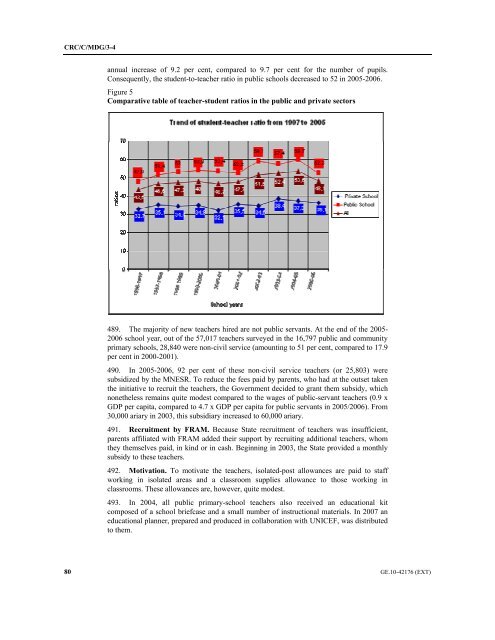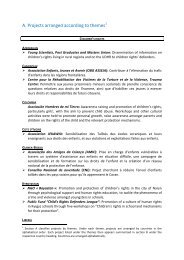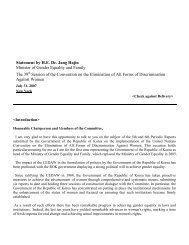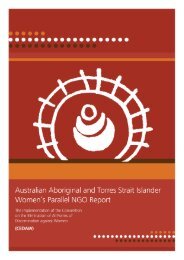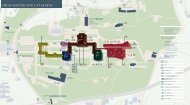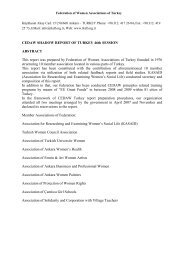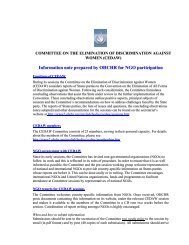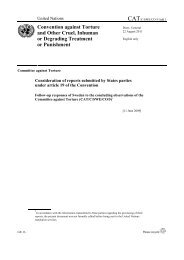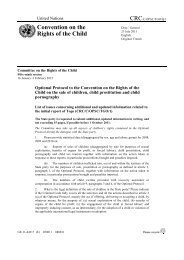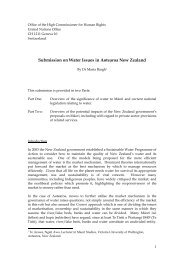CRC/C/MDG/3-4 - Office of the High Commissioner for Human Rights
CRC/C/MDG/3-4 - Office of the High Commissioner for Human Rights
CRC/C/MDG/3-4 - Office of the High Commissioner for Human Rights
You also want an ePaper? Increase the reach of your titles
YUMPU automatically turns print PDFs into web optimized ePapers that Google loves.
<strong>CRC</strong>/C/<strong>MDG</strong>/3-4<br />
annual increase <strong>of</strong> 9.2 per cent, compared to 9.7 per cent <strong>for</strong> <strong>the</strong> number <strong>of</strong> pupils.<br />
Consequently, <strong>the</strong> student-to-teacher ratio in public schools decreased to 52 in 2005-2006.<br />
Figure 5<br />
Comparative table <strong>of</strong> teacher-student ratios in <strong>the</strong> public and private sectors<br />
489. The majority <strong>of</strong> new teachers hired are not public servants. At <strong>the</strong> end <strong>of</strong> <strong>the</strong> 2005-<br />
2006 school year, out <strong>of</strong> <strong>the</strong> 57,017 teachers surveyed in <strong>the</strong> 16,797 public and community<br />
primary schools, 28,840 were non-civil service (amounting to 51 per cent, compared to 17.9<br />
per cent in 2000-2001).<br />
490. In 2005-2006, 92 per cent <strong>of</strong> <strong>the</strong>se non-civil service teachers (or 25,803) were<br />
subsidized by <strong>the</strong> MNESR. To reduce <strong>the</strong> fees paid by parents, who had at <strong>the</strong> outset taken<br />
<strong>the</strong> initiative to recruit <strong>the</strong> teachers, <strong>the</strong> Government decided to grant <strong>the</strong>m subsidy, which<br />
none<strong>the</strong>less remains quite modest compared to <strong>the</strong> wages <strong>of</strong> public-servant teachers (0.9 x<br />
GDP per capita, compared to 4.7 x GDP per capita <strong>for</strong> public servants in 2005/2006). From<br />
30,000 ariary in 2003, this subsidiary increased to 60,000 ariary.<br />
491. Recruitment by FRAM. Because State recruitment <strong>of</strong> teachers was insufficient,<br />
parents affiliated with FRAM added <strong>the</strong>ir support by recruiting additional teachers, whom<br />
<strong>the</strong>y <strong>the</strong>mselves paid, in kind or in cash. Beginning in 2003, <strong>the</strong> State provided a monthly<br />
subsidy to <strong>the</strong>se teachers.<br />
492. Motivation. To motivate <strong>the</strong> teachers, isolated-post allowances are paid to staff<br />
working in isolated areas and a classroom supplies allowance to those working in<br />
classrooms. These allowances are, however, quite modest.<br />
493. In 2004, all public primary-school teachers also received an educational kit<br />
composed <strong>of</strong> a school briefcase and a small number <strong>of</strong> instructional materials. In 2007 an<br />
educational planner, prepared and produced in collaboration with UNICEF, was distributed<br />
to <strong>the</strong>m.<br />
80 GE.10-42176 (EXT)


